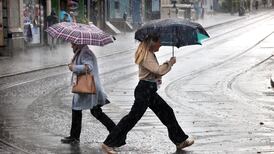Usher’s Island is the ugliest place in Dublin city according to research that will be presented at a Royal Institute of the Architects of Ireland (RIAI) conference in Dublin today.
The top three prettiest places in the centre of Dublin are the south Georgian area, the east end of Portobello, and Blessington Basin, in the north inner city. The ugliest are the Usher’s Island-Bridgefoot Street area, Cork Street and the Coombe, all in Dublin 8.
The analysis by architect Motti Ruimy and urban planner Paul Kearns, authors of Redrawing Dublin, is part of the Mapping Beauty project in collaboration with the School of Geography UCD, which aims to determine how Dublin streets can be made more beautiful and more desirable places to live.
Neighbourhoods within the city centre area bounded by the Royal and Grand canals were judged by five criteria: the amount of vehicular traffic; the percentage of land zoned as open space; the amount of vacant/derelict land in the area; the number of protected structures; and the number of street trees.
Obvious spot
The analysis throws up some surprising results. South of the river the Dublin 8 area of the city has the worst five ugliest spots, with Dolphins Barn, and the Christ Church-High Street area coming in at numbers four and five, while Parnell Square on the northside makes it in at number six. Also, while the South Georgian area might be an obvious beauty spot, Temple Bar which came in at fifth most beautiful, might be less so. Kilmainham emerged as the fourth prettiest and the Grafton Street area the sixth.
Mr Kearns explains the use of neighbourhoods rather than individual streets means that while people may have “favourite” eyesores and blackspots, the surrounding areas had enough trees or green spaces, or were less choked by traffic, to keep them off the bottom.
“If it were just streets, Summer Hill, or along the Luas Red line would probably feature, but these areas have a number of quieter back streets and the presence of some parks, while a high level of vehicular pollution drove down the Christ Church-High Street area . . . Also the analysis doesn’t capture ugly buildings or litter”.
The research aims to start a conversation about how to make densely populated areas more beautiful, and beautiful areas more dense, he said.
“Mapping Beauty is about democratising information. It’s about having an open debate. What sort of inner city do we have? What sort of inner city do we want? We would argue the first step in any positive change begins with honesty, openness, telling it as it is.”
Socially or economically vulnerable people, particularly those living in very small apartments in high density neighbourhoods are more dependent on the immediate quality of their street, Mr Ruimy said.
“The lack of street trees, or local parks, or the presence of dereliction, and heavy traffic can all make an inner city neighbourhoods less beautiful, more challenging to live and compound inequality.”
The RIAI and Academy of Urbanism conference Urban Futures Cities & Towns in Transition runs on Thursday and Friday in Dublin Castle.










